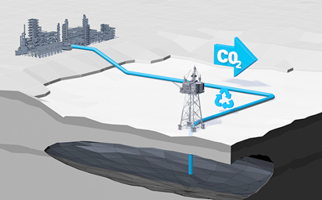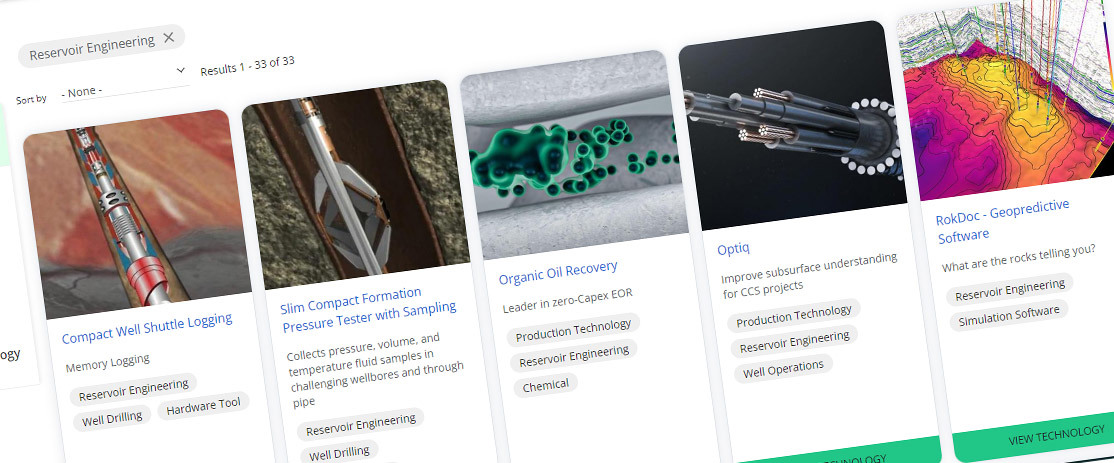Well drilling and construction continues to show new technologies this year.
The Wells Task Force’s Reservoir and Wells Optimisation group is focused on well intervention to assist operators in restarting production from shut-in wells.
Solutions for lower-cost wells and digital well planning continue to show increasing traction in the industry.
Specific designs and technologies for CO2 storage are emerging.
Well drilling and construction technologies
- Eighty-six percent of technologies reported have had at least one field deployment (proven, TRL 9, or early commercialisation, TRL 8).
- There is reliance on vendors’ supply for the majority of technologies (69% of the total).
- Operators are involved in the development and pilot stages of the remaining 31% technologies, mostly in partnership with vendors.
New this year are drilling and completion of long horizontal wells (techniques and methodology) and an interventions specific digital planning and execution database. Emerging technologies include well metallurgy advances and drilling collision software.
- Drilling and completion of long horizontal well: Methodology and techniques for long horizontal wells and related completions.
- TRL 9 commercially available (NEW)
- Interventions specific digital planning and execution database: Digital database to store all job data to allow for a global database of performance KPIs, best practices etc. with lower level of user input.
- TRL 9 commercially (NEW)
- Lower completion design: Open hole gravel packing combined with zonal isolation.
- TRL 9 commercially available
- Digital well planning: Digital well construction planning solution that will allow you to maximise the results from your teams by giving them access to all the data and science they need in a single, common system.
- TRL 9 commercially available
- Well Activity Reporting Portal (WARP): Digital WARP to improve drilling efficiencies and working practices.
- TRL 9 commercially available
SLB DrillPlan Software DrillPlan well construction planning solution provides well planning teams access to data and science in a single, common system. It automates repetitive tasks and validation workflows.
Technology example link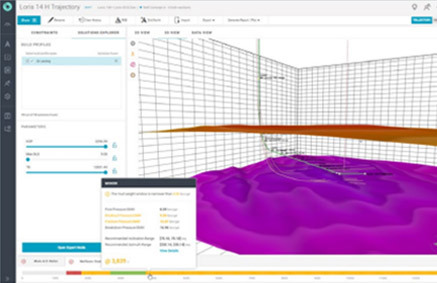
- Well planning using artificial intelligence: Work with external provider to develop AI well planning too. Fast turnaround alternative well path trajectory screening.
- TRL 8 early commercialisation
- Well design for carbon storage: Explore the latest CO2 well-design requirements and technology. Reinjection of CO2 in North Sea depleted reservoirs presents challenges on well design such as material, low temperatures, flow assurance and re-entry into severely depleted reservoirs.
- TRL 5-7 late development/pilot
- Reduce/eliminate risk of drilling collision issues caused by high well density and positional uncertainties.
- TRL 5-7 late development/pilot
Technologies include digital solutions for drilling controls, technologies for high accuracy surveying while drilling, and drill bit modification and optimisation techniques. New this year are ERD related drilling equipment and or techniques and a definitive dynamic survey-while-drilling service.
- ERD related drilling equipment and/or techniques: Technology to increase the production casing setting depth beyond what was achieved before.
- TRL 9 proven technologies (NEW)
The EarthStar ultra-deep resistivity service is an innovative logging-while-drilling (LWD) technology that illuminates the reservoir by revealing reservoir formations and fluid boundaries up to 225 feet (68 meters) around the wellbore. It enables operators to position production boreholes accurately while mapping large volumes of the reservoir.
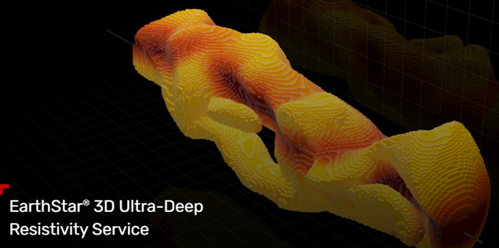
- DD tools: High accuracy surveying to reduce error ellipses in ERD wells. Dual inclination and other survey tool combinations to reduce vertical and lateral error ellipses. Part of a definitive dynamic survey-while-drilling service.
- TRL 9 commercially available (NEW)
- TRL 9 commercially available (NEW)
- Ultra-deep resistivity service: Advanced geosteering resistivity tool to place wells more accurately in the reservoir.
- TRL 9 commercially available
- High departure HPHT wells: High departure to reach near field HPHT prospects.
- TRL 9 proven technologies
High accuracy surveying to reduce error ellipses in ERD wells. Dual inclination and other survey tool combinations.
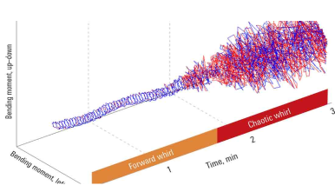
- Drill Bit Modification and Optimisation: Research and development with service companies to continue to drive reliability, durability and reduce trips.
- TRL 5-7 late development/pilot
Drilling equipment and well equipment sub-categories continue to show high-quality solutions for improving well access for interventions using low-cost platform workover rigs.
New this year are wellhead fatigue management, logging while drilling using sonic logging and stepwise emissions monitoring. Emerging technology includes a single-lift well-to-well transfer system and zonal isolation by hybrid external casing packer.
- Wellhead fatigue management: BOP tethering to mitigate wellhead fatigue. Tethers may be secured to the template or to gravity bases.
- TRL 9 commercially available (NEW)
- Sonic logging: LWD sonic tool used to log across 9 5/8" casing for top of cement identification after well encountered severe losses during cementing. Reducing the uncertainty in top of cement measurement was the driver behind implementing the tool.
- TRL 9 commercially available (NEW)
- Emissions monitoring: Reduces emissions during wells activities. Software system helps operators reduce emissions by accurate monitoring against identifiable targets, using cloud based techniques, measure real-time emissions against a baseline and target during drilling, measure the well’s emissions during each drilling section, analyse real-time well emissions.
- TRL 9 commercially available (NEW)
- Completion insertion and removal under pressure technology: Enables running and retrieving long gun strings under wellhead pressure when the surface pressure control equipment, or lubricator, is shorter than the gun string.
- TRL 9 commercially available
- A number of low-cost platform retrofittable workover rigs are being adopted such as lightweight wireline systems, and modular drilling rig systems.
- TRL 9 commercially available
The new 90’ LynxTM Wire Line Mast is setting a new industry standard. Introducing superior efficiency, increased working environment and without the need for external cranes once installed. Also features BOP access in compliance with Norsok S-002.
Technology example link
- Casing Integrity and Cement Mapping (CICM) tool: Used to measure casing wear. Technology has not been run in the UK North Sea. Collect casing and cement integrity measurements any time you run drill pipe in the well, reduce cost and rig time required to obtain well integrity data, eliminate the need for a dedicated logging run.
- TRL 8 early commercialisation
- Interlift: Single-lift well-to-well transfers, eliminates use of a wireline mast, eliminates working under suspended loads, and reduces POB.
- TRL 5-7 late development/pilot (NEW)
- Zonal isolation in the reservoir: Hybrid external casing packer/gravel pack system.
- TRL 8 early commercialisation (NEW)
In this sub-category operators are using deployable technologies such as digital software using machine learning and AI for looking ahead of the bit during geosteering, logging while drilling, and ultra high-definition software to combine with high-frequency torsional oscillation dampening tools. New this year is a deep resistivity near-bit, shallow, and ultra-deep resistivity service.
- Deep resistivity: Near-bit, shallow, and ultra-deep resistivity service.
- TRL 9 commercially available (NEW)
Baker Hughes’ SoundTrak service provides acoustic measurements while-drilling. This service provides compressional and shear wave traveltime in “fast” and “slow” formations. This allows real-time access to critical formation information that maximises drilling efficiency and wellbore placement.

- Geosteering with ultra-deep resistivity LWD tool: Supports tracking of horizontal sections to enable accurate landing of wells and controlling their path through the reservoir.
- TRL 9 commercially available
- Intelligent wireline formation testing platform: Enables real time data interpretation in a collaborative environment. Deep transient testing capabilities eliminate flaring and reduce carbon emissions. Deployment on wireline with standard crew increases operational agility and reduces footprint compared with DST.
- TRL 9 commercially available
- CoPilot3: In combination with HFTO dampener tool, CoPilot3 used to control torque applied at bit thus ensuring HFTO dampener tool operates within limits, but also optimises downhole WOB, which appeared to improve ROP on first application compared to a direct offset well.
- TRL 9 commercially available
The CoPilot™ ultra-high-definition (UHD) service measures downhole drilling dynamics in real-time and records ultra-high-definition data to memory during dysfunctional drilling events.
Technology example link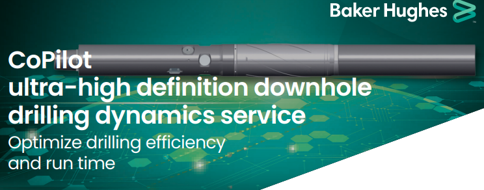
- Geosteering software: Assists realtime geosteering decision during drilling by matching LWD log response against offset wells or models.
- TRL 9 commercially available
- Realtime automatic lithology: Real time automated lithology and geological risk predictions for safer and more efficient drilling.
- TRL 9 commercially available
- Acquiring high resolution borehole images in oil base mud environments: Borehole image logging tool operates in oil base muds and provides high resolution image previously only achievable with conductive water base muds which are rarely used these days.
- TRL 9 commercially available
A range of deployable technologies for drilling, casing and cementing are reported including small margin drilling in pressure transition zones, high saturation brine, pressure wave LWD tool, remote ROV controlled from Stavanger to guide and monitor drill string and conductor guidance and bubble watch. No new technologies this year.
- Remote ROV: ROV operations piloted from the Oceaneering Remote Operations Centre in Stavanger. The active operations included drill string/conductor guidance and bubble watch culminating in over 70 hours of flying time.
- TRL 9 commercially available
- TRL 9 commercially available
- PressureWave LWD tool: LWD pressure testing tool. Only currently available on 8 1/2" BHA. No previous experience of use by operator. No previous experience in industry of deployment in HPHT well.
- TRL 9 commercially available
- TRL 9 commercially available
- Expandable casing patch: Identified risk of leak in existing 13 3/8" casing. As part of slot recovery programme, expandable casing patch was deployed to remediate. Patch was sized to allow subsequent drilling and casing cementing through the patch.
- TRL 9 commercially available
- TRL 9 commercially available
- High-saturation brine: High-density clear fluids are often required in completion operations. As fluid densities increase beyond 14ppg high-cost formate type brines have typically been required. New fluid technologies are now available allowing conventional type brines (Bromide) to be used at higher densities than typically used.
- TRL 9 commercially available
- TRL 9 commercially available
- Small margin drilling in pressure transition zone: Accurate measurement of casing setting depth in pressure transition zone above reservoir.
- TRL 8 early commercialisation
- TRL 8 early commercialisation
- Alternative path gravel packing: Infill development wells drilled through reservoir sections which include interbedded shales can cause issues with installation of open hole gravel packs required for downhole sand control. This system allows the gravel pack to effectively bypass the shale sections, which would normally cause premature screen out of the pack, through use of ‘shunt tubes’.
- TRL 8 early commercialisation
This sub-category includes deployable technologies such as hydraulic fracturing to improve poor reservoir quality, fracture sleeves, a fracture modelling software tool and a miniature coil tubing hose for injecting nitrogen. No new technologies this year.
- Fracture sleeves: Provide the basis for continuous pumping stimulation operations that save time by eliminating the need to run individual plugs and perforating systems for each zone.
- TRL 9 commercially available
Fracture sleeves are the basis for continuous pumping stimulation operations that save time by eliminating the need to run individual plugs and perforating systems for each zone.

- Miniature coil tubing hose: Deployed in a similar method to slickline which provides an alternative solution to kick off wells by injecting nitrogen.
- TRL 8 early commercialisation
Operators’ technology plans for 2025 show adoption of multi-function wireline tool-strings and intelligent completions, multiset well plugs, controllable completions, open hole packers and a self-equalising tubing retrievable surface controlled sub-surface safety valve. No new technologies reported this year.
- Controllable completion for oil producers: Involves compartmentalising the open hole to allow future intervention to shut-in zones individually. The design includes a controllable inner string, consisting of swell packers set inside the screens in a blank pipe section and an opened sliding sleeve per zone for initial flow.
- TRL 9 commercially available
- Open-hole packers: New technology for gravel pack completions.
- TRL 9 commercially available
- TRL 9 commercially available
- ICV smart completion: Smart completion to control multizonal sand face inflow.
- TRL 9 commercially available
- TRL 9 commercially available
- TRSCSSSV with self-equalising: Tubing retrievable surface controlled subsurface safety valve.
- TRL 9 commercially available
- TRL 9 commercially available
- Combined wireline toolstrings: Single run toolstring to punch tubing and set straddle for use in retro-fit gas lift applications. Saving a toolstring run on LWIV operations. Bridge plug with integrated junk catcher, again saving an additional wireline run.
- TRL 9 commercially available
- TRL 9 commercially available
- Multiset well plug: Multiset well plug with an electric setting tool will allow the plug to be set and unset repeatedly in a single run.
-
TRL 8 early commercialisation
-
Multiset well plug: Interwell retrievable HPHT bridge plug with an electric setting tool will allow the plug to be set and unset.

Retrievable HPHT Bridge Plug
Electric Setting tool

